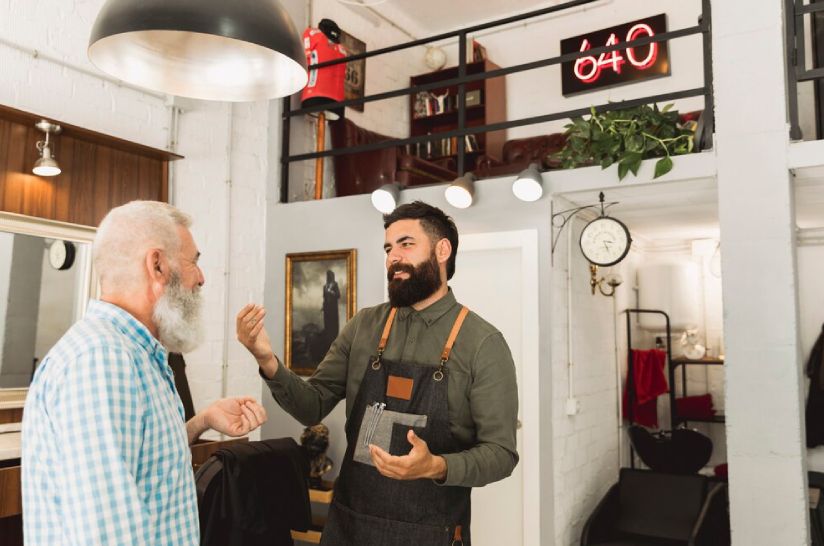We recently talked with the people at Pitch Black Digital Marketing, and one thing became crystal clear: local content is a game-changer for small businesses. As experts in website development, design, Google SEO , and Google PPC ads https://pitchblack.au/ppc-management-perth, they’ve seen firsthand how businesses that connect with their communities through smart content strategies thrive in ways that generic marketing can’t match. Whether you’re just starting out or looking to strengthen your local presence, creating content that speaks directly to your community isn’t just nice – it’s necessary.

Understanding Your Local Audience
Before you write a single word of content, you need to know who you’re talking to. Your local audience isn’t just “people who live nearby” – they’re individuals with specific interests, needs, and behaviors that are often shaped by your shared location.
Start by looking at your existing customers. What neighborhoods do they come from? What age groups? What brings them through your door instead of your competitor’s? A coffee shop might discover their customers are primarily remote workers looking for a productive space, while a hardware store might serve a lot of weekend DIY warriors from surrounding suburbs.
Don’t just guess at this information. Talk to your customers when they visit. Create a simple survey they can fill out while waiting. Check your social media insights to see who’s engaging with your posts. Tools like Google Analytics can show you where your website visitors are coming from geographically.
Pay attention to local social media groups too. What are people in your community discussing? What problems are they trying to solve? What local events generate excitement? A quick scroll through neighborhood Facebook groups or local Reddit threads can reveal content goldmines.
Remember that your audience’s interests change with the seasons, local events, and even road construction projects. The more tuned in you are to these rhythms, the more relevant your content will be.
Types of Local Content That Work
The beauty of local content is its versatility. Here are some proven formats that small businesses can use to connect with their communities:
Local Guides and Resources
Remember that bike shop example with the “Top 5 Bike Trails in the Perth Hills” blog post? This works because it provides genuine value to both existing and potential customers. A pet store could create “Dog-Friendly Parks in Portland,” while a bookstore might offer “Literary Landmarks in Your Neighborhood.” These guides position you as a local expert and attract people interested in your niche.
Community Spotlights and Partnerships
Highlighting other local businesses, artists, or community figures can build goodwill and expand your reach. Interview the founder of a complementary business, feature local suppliers, or spotlight a customer doing interesting things in your community. These pieces create connection points and often lead to cross-promotion when featured businesses share your content with their followers.
Local Event Coverage and Calendars
Becoming the go-to source for information about local happenings can drive regular traffic to your site. A restaurant might cover the upcoming food festival, while a clothing boutique could create a “What to Wear to Local Summer Concerts” guide. Even a simple monthly roundup of community events relevant to your audience can become a valuable resource.
“Best of” Local Lists and Recommendations
People love recommendations from those “in the know.” Create content like “Hidden Gems in Downtown Austin” or “Best Places to Watch the Sunset in San Diego.” Even if your business isn’t directly mentioned, you become associated with local expertise. Just make sure your picks are authentic – locals can spot tourist-trap recommendations from a mile away.
Local Problem-Solving Content
Address specific challenges your community faces. A landscaping company in Arizona might create “Drought-Resistant Plants That Thrive in Phoenix,” while a financial advisor in a college town could offer “Managing Student Housing Costs in Ann Arbor.” These highly specific, solution-oriented pieces draw in people actively looking for answers.

Creating Content Without Breaking the Bank
You don’t need a marketing department or expensive tools to create effective local content. What you need is your unique perspective and some basic tools that are likely already at your fingertips.
Your smartphone is a content creation powerhouse. Take photos of your neighborhood, record quick videos walking through local attractions, or capture audio snippets from community events. Free apps can help you edit these into professional-looking content.
Text-based content doesn’t require fancy software either. Google Docs or even your phone’s notes app works fine for drafting blog posts. Free tools like Canva make creating simple graphics accessible to everyone, no design experience needed.
The biggest resource constraint for most small business owners is time, not money. Break content creation into smaller tasks you can fit into spare moments. Draft ideas while waiting for appointments. Take photos during your lunch walk. Edit content in 15-minute chunks when business is slow.
Don’t overlook the knowledge you already have. That mental map of the neighborhood’s best lunch spots? The seasonal tips you give customers daily? The local history you’ve picked up over years of operation? These are all valuable content waiting to be shared.
Consider involving your staff in content creation too. The barista who photographs every latte art creation might run your Instagram. The sales associate who knows every product detail could write comparison guides. Just make sure to recognize their contributions and, if appropriate, compensate them for this additional work.
Making Your Content Findable
Creating great local content is only half the battle. You also need to make sure people can find it, both through search engines and community channels.
When it comes to local SEO, specificity matters. Instead of targeting “coffee shop,” focus on “coffee shop downtown Portland Maine” or even “where to get oat milk lattes in the Old Port.” These longer, location-specific phrases might get less overall traffic, but they attract visitors much more likely to become customers.
Include your city, neighborhood, or region name naturally throughout your content. Mention nearby landmarks, streets, or other local reference points that searchers might use. Search engines have gotten much better at understanding location context.
Your Google Business Profile (formerly Google My Business) is critical for local search. Make sure it’s fully completed with current hours, photos, services, and posts. Update it regularly with your new content – this tells Google your business is active and relevant.
Don’t forget about local online distribution channels. Share your content in neighborhood Facebook groups (where appropriate and not spammy), local subreddits, community forums, and NextDoor. Tag relevant local accounts when sharing on social media. Reach out to local blogs or news sites that might be interested in featuring your expertise.
Building relationships with other local content creators can expand your reach. Comment on their posts, share their content, and look for collaboration opportunities. A jewelry store and a florist might team up on local wedding content, while a gym and nutritionist could create wellness guides together.
Measuring What Works
You don’t need complicated analytics to determine if your local content is working. Start with simple metrics anyone can track:
Website traffic from local areas can be monitored through Google Analytics’ location reports. Are more people from nearby zip codes visiting your site after you publish local content?
Social engagement from local users matters more than total likes. Are actual community members commenting on and sharing your posts? A few shares from influential local accounts can be more valuable than dozens of random likes.
The in-store mention test is perhaps the most important metric. Are customers mentioning your content when they visit? “I saw your post about the festival” or “Your neighborhood guide brought me in” are golden indicators that your content is working.
Phone calls or form submissions that reference specific content pieces help you trace direct impact. Consider adding a simple “How did you hear about us?” question to capture this information.
Don’t get discouraged if your first attempts don’t generate immediate results. Local content marketing is a long game. Track what topics generate the most interest and create more content in those areas. Notice which formats your audience prefers and lean into those.
The true measure of successful local content isn’t just traffic – it’s community building. Are you becoming a recognized voice in your area? Are other businesses referring to your guides? These relationship indicators often precede financial returns.
Your Next Steps: Building Local Connection One Piece at a Time
Creating local content doesn’t happen overnight. Start small with one piece that feels manageable – perhaps a guide to your immediate neighborhood or answers to the questions customers ask most frequently.
Consistency matters more than volume. A monthly neighborhood update that actually happens is better than an ambitious daily posting schedule that fizzles out after a week.
Remember that your local knowledge is your superpower. National chains and online giants can’t match your understanding of what makes your community special. Let that authentic connection shine through in every piece you create.
As the team at Pitch Black Digital Marketing emphasized in our conversation, local content isn’t just a marketing tactic – it’s community service. When you create truly helpful resources for your neighbors, the business benefits follow naturally.
So take that first step. Look around your community, listen to your customers, and start telling the local stories only you can tell. Your business isn’t just on the map – it’s becoming part of what makes your local map worth exploring.





